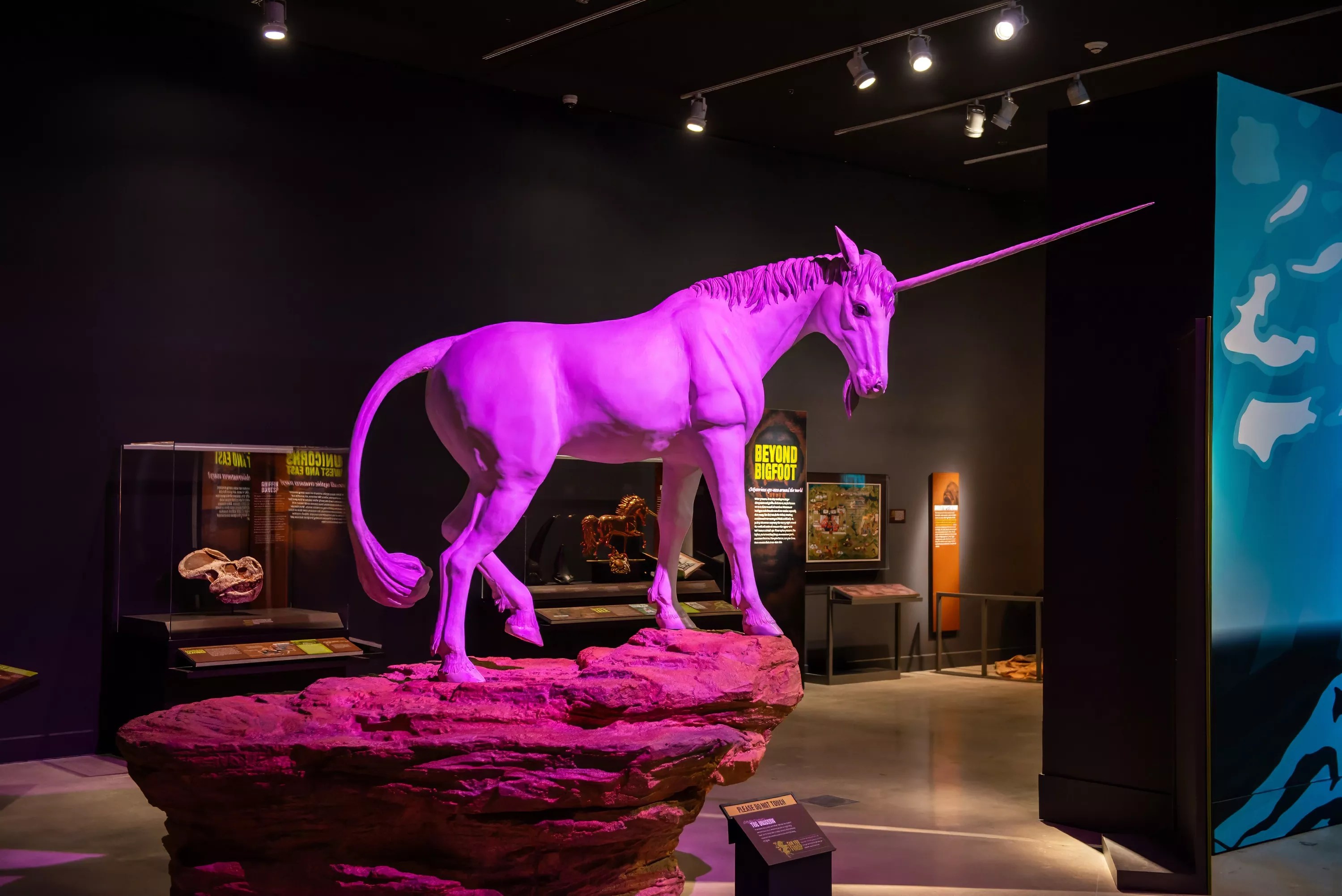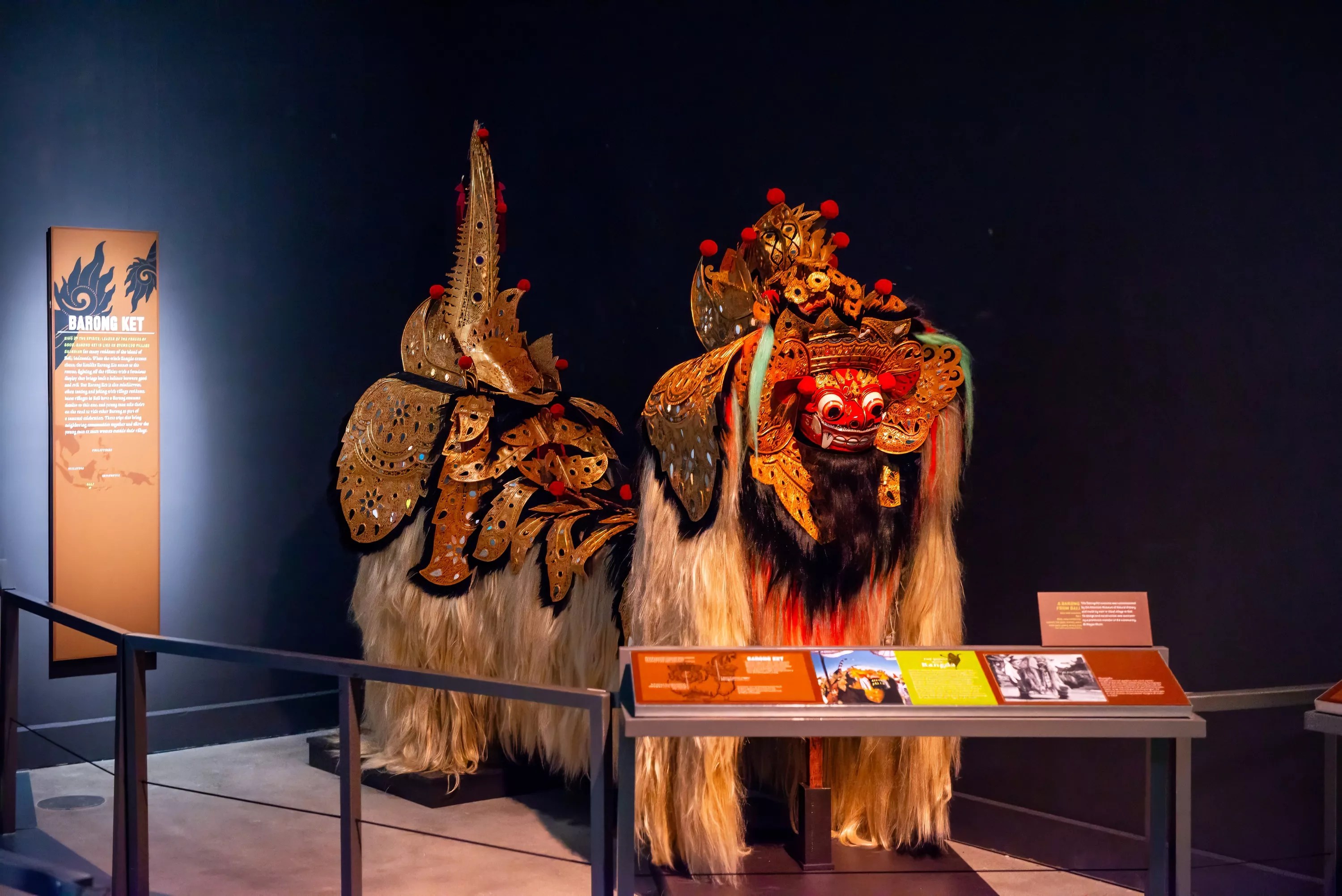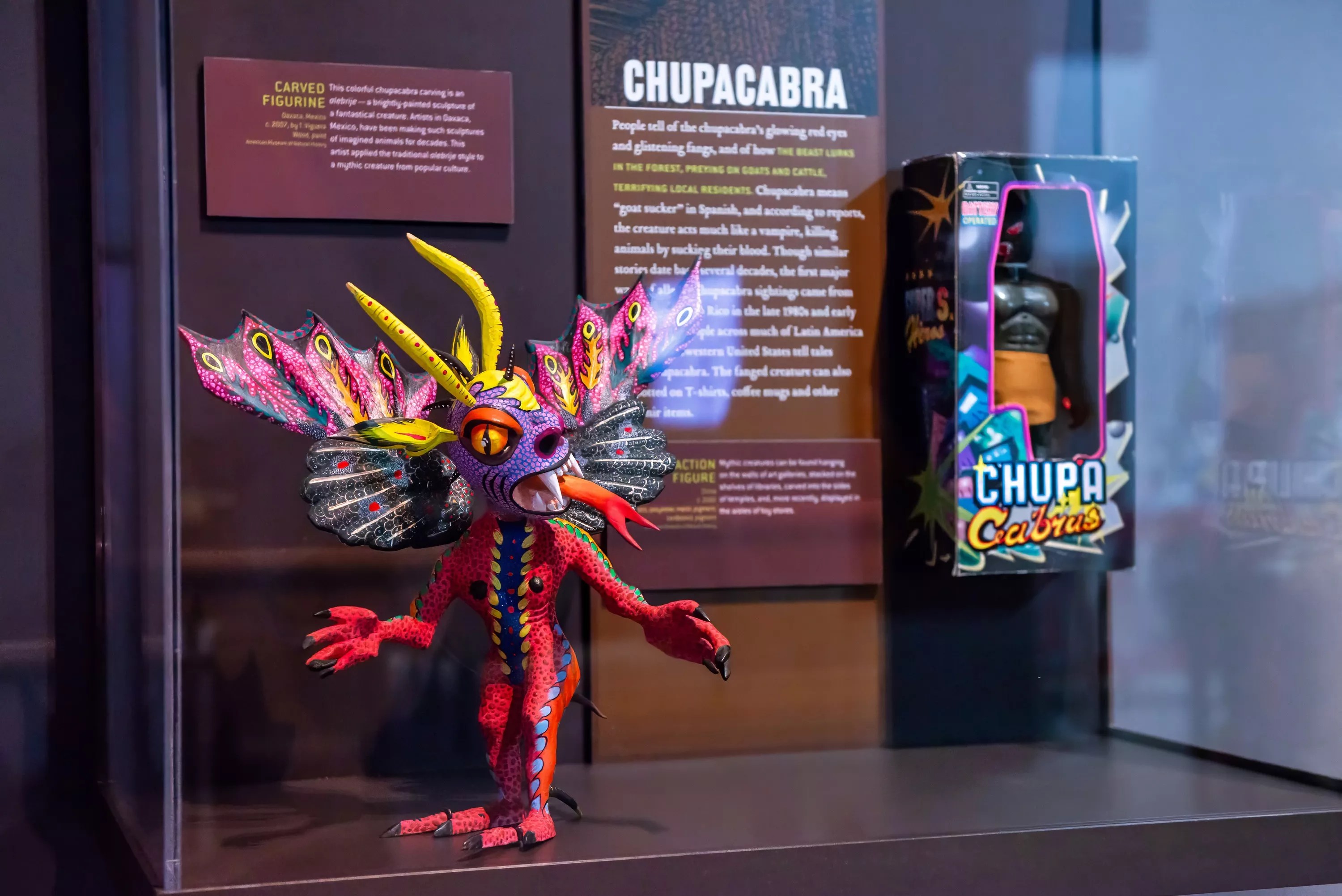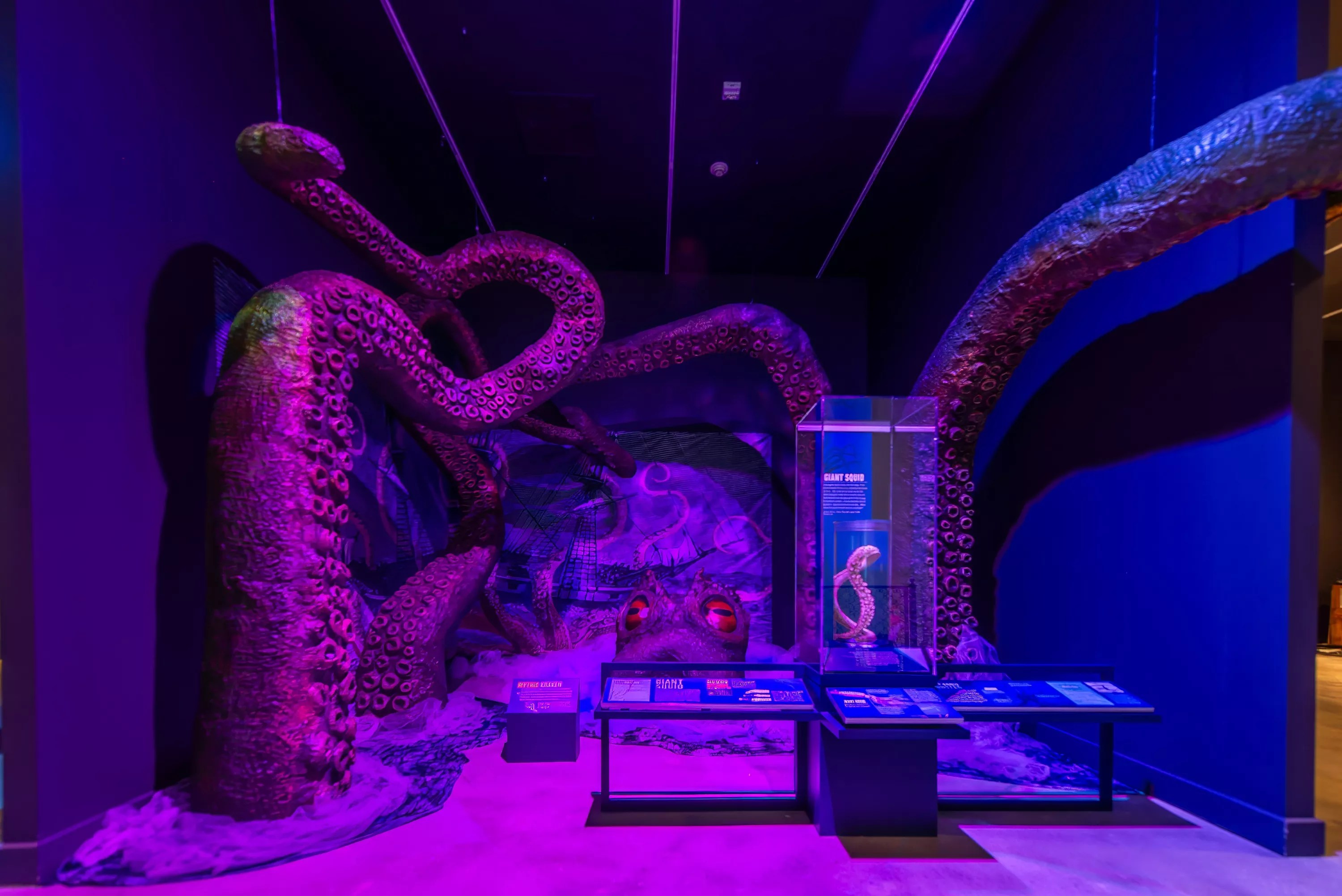
Photo by Justin Namon/HistoryMiami Museum

Audio By Carbonatix
In recent years, the term “crypto” has become more closely associated with tech bros and blockchains than Bigfoot. Starting July 8, HistoryMiami Museum is reclaiming the word.
“Mythic Creatures: Dragons, Unicorns, & Mermaids” traces the cultural origins of some of the world’s most enduring mythological creatures. The show is a mix of natural history and anthropology, delving into the real-life counterparts of these otherworldly creatures and putting the humans who believe them under the microscope.
“Take the griffin [exhibit],” says director of exhibitions Christopher Barfield, passing a display case containing a dinosaur skull. “It talks about the different stories around the griffins and the myths and the cultural contexts in which they are created, and also at this end [of the exhibit], we bring up a plausible explanation for how ancient people would have interpreted a protoceratops skull.”
While most of the show originates from the American Museum of Natural History in New York, the team at HistoryMiami wanted to create a space that explores the city’s history with the paranormal. This started by consulting Jason Katz of Islandia Journal, a South Florida-based journal specializing in stories of myth and folklore.
Miami, make your New Year’s Resolution Count!
We’re $14,000 away from reaching our $30,000 year-end fundraising goal. Your support could be what pushes us over the top. If our work has kept you informed, helped you understand a complex issue, or better connected you to your community, please consider making a contribution today.

“Mythic Creatures” is a mix of natural history and anthropology, delving into the real-life counterparts of these otherworldly creatures
Photo by Justin Namon/HistoryMiami Museum
“In talking to Jason, we started identifying possible creatures,” says Vanessa Navarro Maza, folklife curator at HistoryMiami. “We had a really long working list of ideas and resources and people, and as we started to kind of whittle down. We started to have strong sections for these three creatures here: the mermaids, the skunk ape, and the chupacabra.”
Navarro Maza already had some familiarity with these creatures, like the mermaid, but it was in researching the local prominence of these creatures that gave her a newfound appreciation of creatures like the skunk ape, Florida’s version of the Bigfoot legend.
“It wasn’t until we did this project that we realized how huge of a Florida story the skunk ape is,” Navarro Maza adds. “These recorded sightings go back to 1818, over 200 years of people seeing this creature and even before that. The indigenous communities of Florida have stories about the tall hairy man, so it’s like, how long has this thing possibly been living amongst us?”
It is the human element of these stories which gives power to these creatures. Take, for example, Miami’s chupacabra scare of 1996, documented in “Mythic Miami,” the localized section of the exhibition.
“There’s this period in 1996 when there are a lot of mysterious animal killings, and there are a lot of things that happen because of these mysterious killings,” Navarro Maza explains. “There is this chupacabra myth that actually originates in Puerto Rico, and once that is given as a possible explanation for this, things kind of go nuts in Miami for a little while.”

Originating from American Museum of Natural History in New York, “Mythic Creatures” was localized by the HistoryMiami team to include Miami mythology like the chipacabra.
Photo by Justin Namon/HistoryMiami Museum
Residents of rural Miami-Dade wanted answers, and this campfire story was the most convenient explanation. How else do you explain such mysterious, gruesome killings?
“One of the women says she lost 42 birds in one night, and she didn’t hear a peep,” Navarro Lazo adds. “And the birds were still there; they were just dead. One of the things she said was what’s it going to do once it’s done killing all the animals?”
Like the citizens of Amity Island in Steven Spielberg’s Jaws, Miami’s reaction to its own blood-thirsty beast ranged from cheeky to chilling. One T-shirt that circulated featured a ’90s-style cartoon chupacabra wearing Nikes and a beeper, stuntin’ next to a six-pack of goat blood. One radio station offered a $1,000 cash prize for a picture of the creature. What finally got authorities to treat this campfire story as a public safety issue was citizens testing the limits of Florida’s stand-your-ground law.
“I remember the hysteria, the T-shirts, I remember the pop culture part of it. And I remember being a little bit scared. I was 8 years old,” Navarro Maza says. “I didn’t realize the more serious part of what was going on was that people were sincerely afraid and threatening to shoot things on their property.”

“People look for ways to explain the unexplainable,” says director of exhibitions Christopher Barfield.
Photo by Justin Namon/HistoryMiami Museum
Looking at the array of cultural artifacts from Miami’s chupacabra episode and the countless items accompanying the rest of the creatures on display is a reminder of how humans rely on stories no matter what century it is.
“People look for ways to explain the unexplainable,” Barfield says. “If it’s an interesting story, whether it’s going to create a T-shirt or it’s going to create a giant statue, it’s interesting ways to explain the unexplainable.”
“Mythic Creatures: Dragons, Unicorns, & Mermaids.” Saturday, July 8 through March 31, 2024, at HistoryMiami Museum, 101 W. Flagler St., Miami; 305-375-1492; historymiami.org. Admission is free with RSVP for Saturday’s opening party. Tickets cost $8 to $15; free admission for children 6 and under.